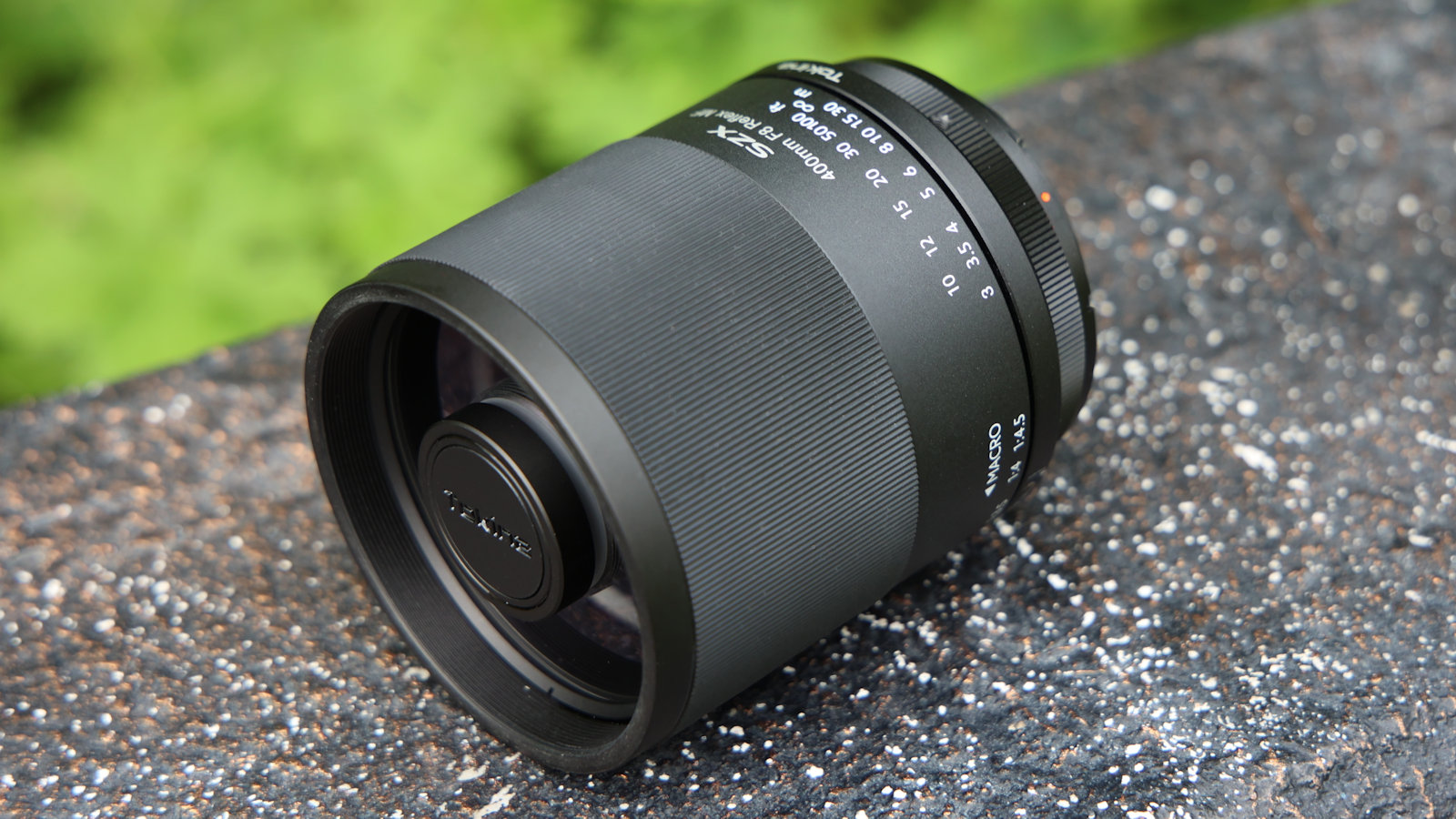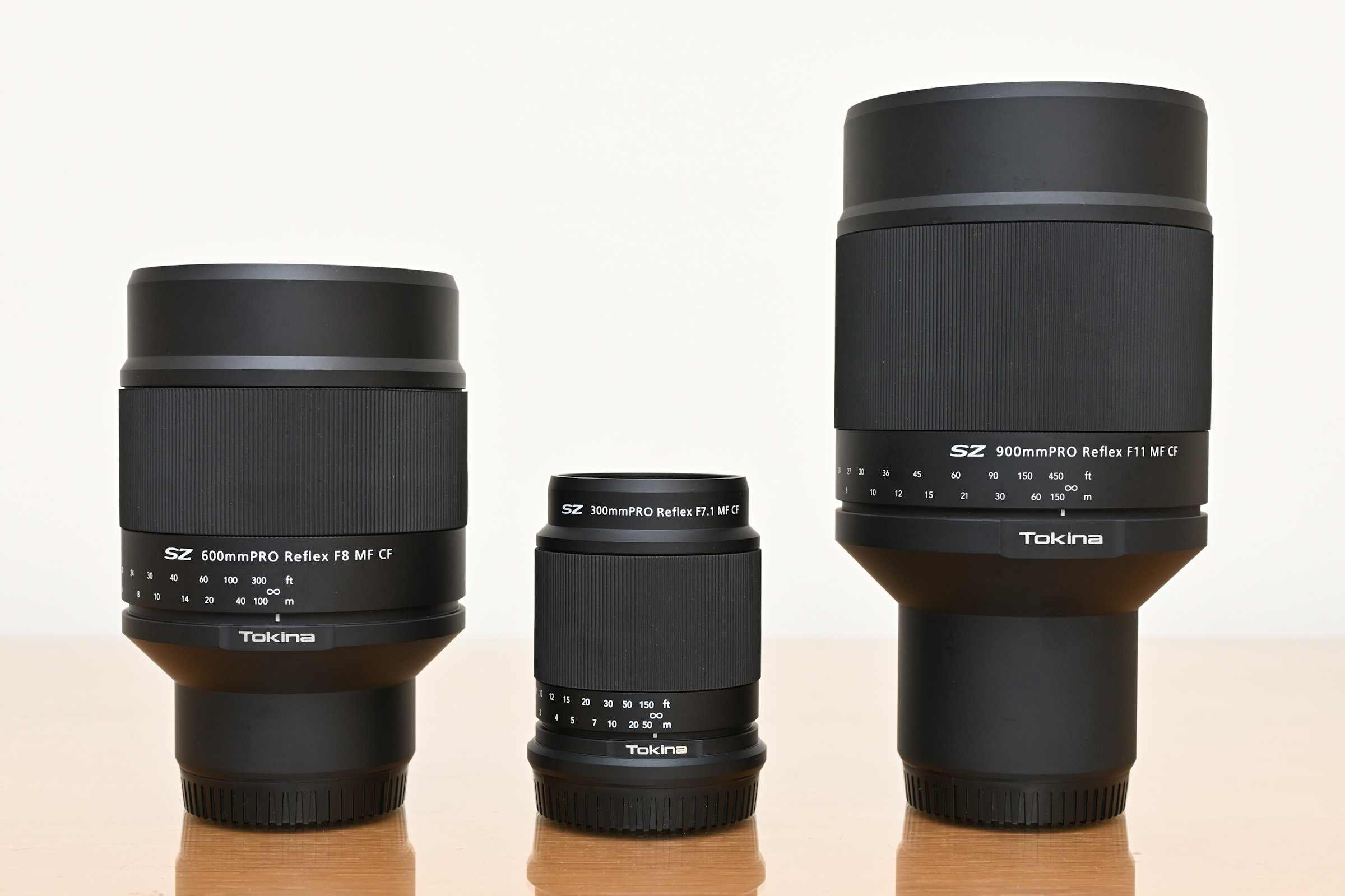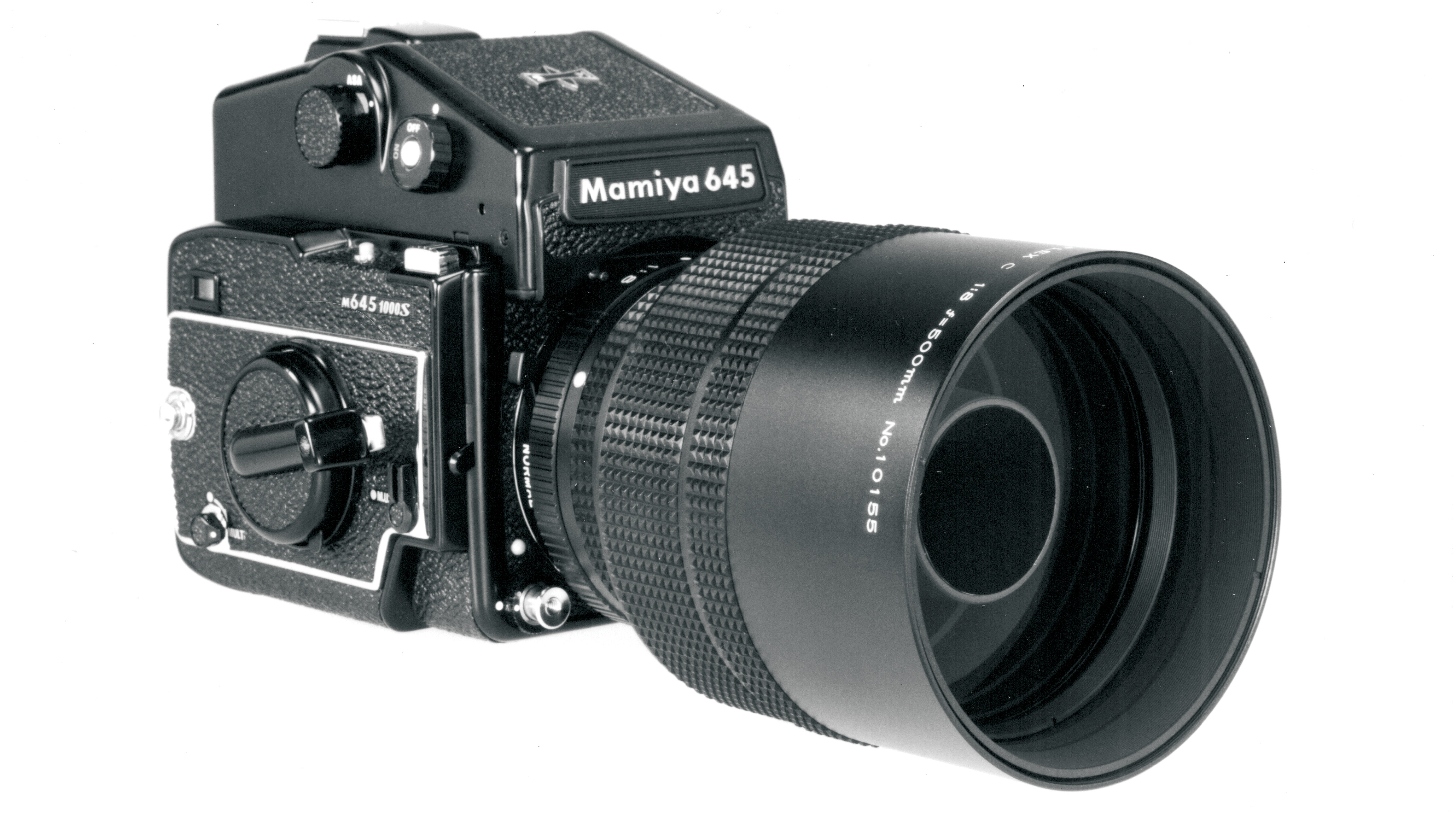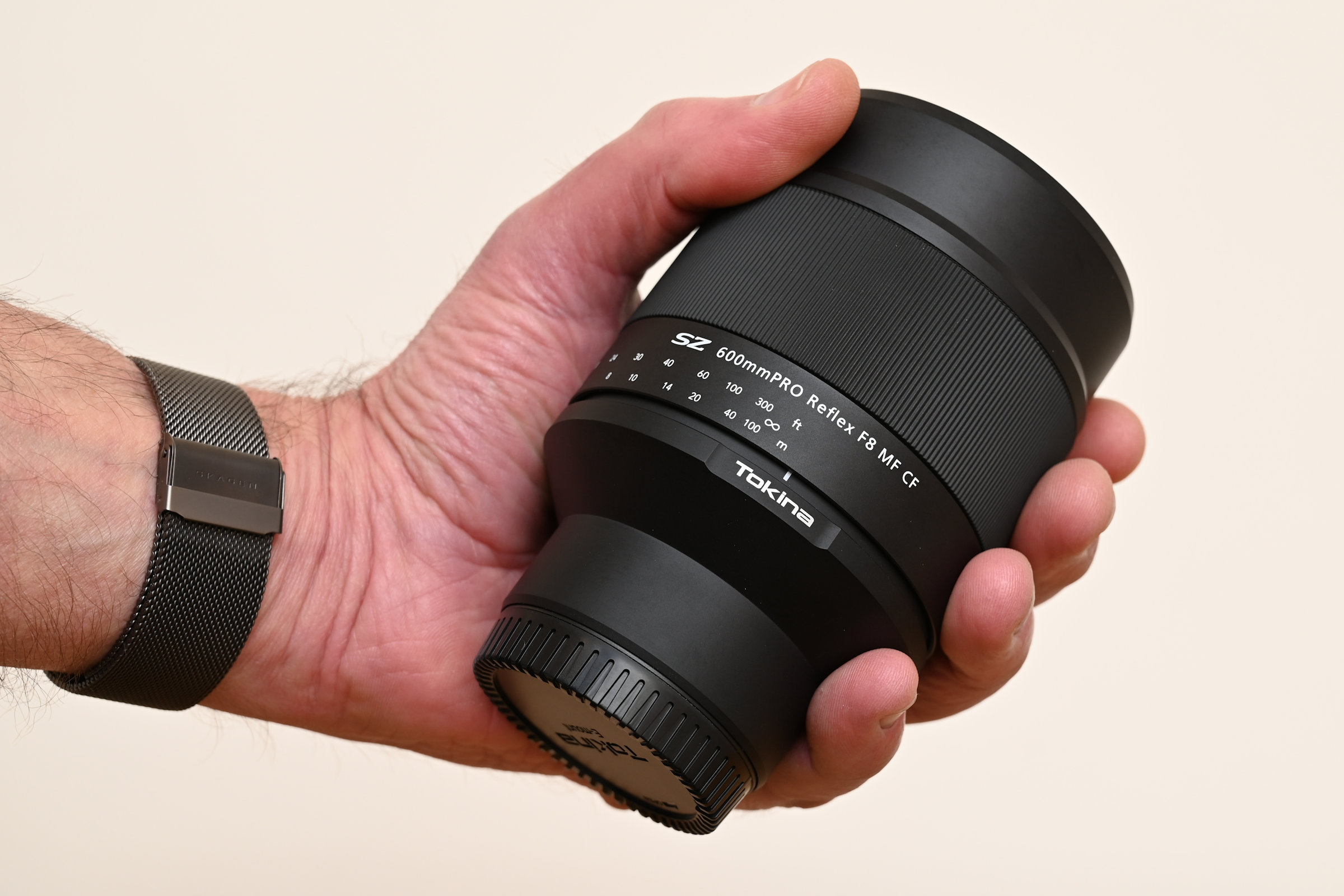A telephoto lens technically has a focal length exceeding 50mm (when using the 35mm/full-frame format). However, the general consensus considers the telephoto category to start roughly at about 85mm, where lenses fall into the 'short telephoto' classification.
Past the 300mm mark, you enter the 'supertelephoto' category with lens options like 400mm, 500mm, and 600mm. Lenses exceeding 600mm tend to be used primarily for specific purposes including wildlife photography or certain sporting events.
Because of their extended focal lengths, telephoto lenses tend to be larger and heavier, making handheld usage more difficult. Generally speaking, as the focal length grows, image brightness diminishes; thus, many telephoto lenses or tele-zooms are referred to as "slower" due to having a relatively small maximum aperture, such as f/5.6 or even less. Nevertheless, since modern mirrorless cameras now offer better high-ISO capabilities, it has become feasible to opt for an economical slow telephoto lens rather than investing in a costly fast one with a wider maximum aperture.
Mirror, Mirror…

Nevertheless, there is a solution for the issues related to the size, weight, and cost of a high-magnification telephoto lens. This alternative is known as a mirror lens because it primarily uses mirrors to achieve this effect.
Mirror lenses have experienced several short-lived waves of popularity, most notably in the 1970s and '80s, yet they've never truly become mainstream, possibly due to certain trade-offs inherent in their design. Nonetheless, these lenses continue to be produced by a few manufacturers such as South Korea's Samyang, China's TTArtisan, and Japan's Tokina.
At present, there are five Tokina reflex lenses within their SZ/SZX and SZ Pro series, spanning from a 300mm f/7.1 to a 900mm f/11. These come with various lens mounts, such as Micro Four Thirds, which effectively doubles the focal length. We will delve into more details about them soon. Historically, brands like Sigma, Tamron, Zeiss (aimed at both Contax and Rolleiflex systems), Minolta, Mamiya, Nikon, and Olympus have produced reflective telephoto optics.
A mirror lens—also referred to as a reflex lens—involves a couple of mirrors instead of numerous standard components, although some traditional pieces are still utilized. These mirrors bounce the light rays back and forth within the lens tube, essentially 'folding' the focal length. As such, an extended focal distance can be housed in a compact body because just two mirrors substitute for multiple parts, making these lenses notably lighter than their traditionally designed counterparts. In technical terms, this setup is termed a catadioptric optical system since it uses both reflections from curved mirrors—catoptrics—and refractions through spherical lens components—dioptrics.
Initially, light bounces off the main mirror located at the rear of the telescope towards a smaller secondary mirror positioned at the front. The process concludes with additional refractions completing the task. Some designs incorporate a curved component coated on its backside for both reflecting and refracting light—this dual action occurs twice within these setups—but the core concepts stay consistent regardless.
The initial use – tracing back indeed to the 17th century – occurred with astronomical telescopes due to the ability of the folded light path to significantly decrease both their dimensions and mass. For photographic catadioptric lenses, the secondary mirror—which features a convex shape—also functions to amplify the focal length by approximately four to five times.
The drawbacks of a mirror lens include the inability to integrate a diaphragm—whether automatic or manual—which means you're stuck with a fixed aperture. Additionally, incorporating autofocus is challenging, making nearly all such lenses manually focused.

Nonetheless, this implies that if you're utilizing an older mirror lens with a mirrorless camera, a simple passive non-electronic mount adapter suffices. These adapters are currently offered in many variations, allowing virtually every combination, which essentially lets you fit almost anything onto anything else.
Of course, manual focusing shouldn't be such a significant issue, but the constant aperture could pose more of a problem. Acknowledge that, as previously mentioned, the advanced high-ISO capabilities of contemporary mirrorless cameras allow for better exposure management through adjustments in shutter speed... Alternatively, you can opt for Auto ISO and let the camera handle these settings.
Additionally, the focus peaking display, which is now standard on contemporary mirrorless cameras, greatly simplifies accurate focusing, particularly when dealing with limited depth of field.
In 1989, Minolta launched the AF Reflex 500mm f/8.0 mirror lens featuring autofocus capabilities; however, this functionality was initially available only on their advanced AF 35mm SLR models equipped with highly responsive phase-detection autofocus systems capable of operating effectively even at an aperture setting as narrow as f/8.0 (though limited to using just the central focus point). Later, Minolta added a 400mm variant in the V-mount configuration specifically designed for use with their Vectis S series APS film-format SLRs. Following Sony’s acquisition of the Konica-Minolta camera division in 2006, a modified model bearing Sony branding became accessible for their A-mount digital single-lens reflex cameras.
Holding steady
Certainly, although a mirror lens offers the same level of magnification at a specific focal length as a traditional lens—thus amplifying any camera movement—the compact and lightweight design makes it easier to maintain stability during longer exposure times. Optical image stabilization isn’t available with mirror lenses; however, since numerous mirrorless models come equipped with built-in sensor-shift stabilization, this drawback has become much less relevant. Additionally, one major advantage lies in their considerably reduced dimensions and weight.

Let's consider Tokina’s SZX Super Tele 400mm f/4.0 Reflex MF lens. Initially developed for DSLRs, the mirrorless versions include a shorter tube connecting the mount to the lens body to compensate for the increased flange-back distance. Despite this adjustment, the overall length remains quite minimal at just a few inches, with a weight of merely 355 grams. The thread diameter for filters measures 67 mm, further highlighting its compact design. Unfortunately, Tokina does not produce a standard 400mm prime telephoto lens for contrast; our aim was to locate a slower version where the distinction in maximum aperture would be less noticeable, though these seem obsolete now. Nonetheless, Canon previously offered a 400mm f/5.6 L-series lens compatible with their EF DSLR mounts, providing a useful point of reference regarding size disparities.
The item measures 257 millimeters in length and has a weight of approximately 1350 grams when including the tripod mounting collar. Interestingly, more than three decades after its introduction in 1993, a used Canon 400mm f/5.6L lens can still command around $700 if it remains in excellent shape. If purchased brand new, the Tokina 400mm f/8.0 mirror lens would cost just slightly above $300.
Staying Focused

Therefore, what does this balance of major pros and cons look like in reality?
Utilizing the Tokina 400mm f/8.0 on a Fujifilm X-T5 – So the actual focal length ends up being 600mm. What stands out right away is how compact and lightweight it is; however, you must keep in mind that you're using a super-telephoto lens.
To begin with, it's indeed quite simple to handle manually, but you must closely monitor the shutter speed—especially since f/8.0 is your maximum aperture—even when aided by IBIS. Even if holding the lens feels manageable, using it comes with difficulties. Due to the extremely high magnification at an equivalent focal length of 600mm, regardless of how still you attempt to keep the lens, the image moves around in the viewfinder, which makes framing and composing shots more difficult.
Ultimately, you'll probably find yourself reaching for a tripod since it's more convenient and less exhausting. Moreover, despite having smaller sensors, the limited depth-of-field means your camera needs to be stationary on a tripod to ensure precise focus—just a slight adjustment of the focusing ring can make a significant impact. Here, the focus peeling feature becomes indispensable, allowing you to use a lighter tripod without compromising quality.
The Tokina 400mm f/8.0 exhibits impressively good macro focusing abilities—capable of focusing up to 1.15 meters, resulting in a magnification ratio of 1:2.5 at 400mm—but using a tripod is essential since the depth of field becomes even narrower, making precise manual focusing extremely difficult without one.


Doing Donuts

In terms of optics, mirror lenses typically excel with excellent overall clarity and contrast, minimal darkening at the corners, almost negligible distortion, and — unlike traditional refractive telephotos — practically no color fringing due to their limited use of standard components. Nonetheless, they struggle particularly when exposed to intense back lighting, as this can substantially decrease image contrast. On a positive note, such lenses do not produce flares or ghost images (once more thanks to having fewer optical parts).
Blocking due to the centrally positioned secondary mirror creates a distinctively ring-like blur when out of focus; people tend to have strong feelings one way or another regarding this characteristic. Additionally, because these telescopes feature a fixed aperture leading to an intrinsically narrow depth-of-field—something unchangeable—the rings will inevitably appear within your shots. These rings may become particularly noticeable against intricate backgrounds, making it essential to compose and frame carefully to reduce their impact. Opting for simpler or more consistent backdrops might help mitigate this issue, as could leveraging the aesthetic quality of the rings in creative ways during composition.
A Small Amount Can Go Far

An excellent illustration of how much compactness can be achieved using a mirror telephoto lens is seen in the Minolta RF Rokkor 250mm f/5.6, an MD-mount lens. This model only extends to 58 millimeters long and tips the scales at merely 250 grams. When paired with a Micro Four Thirds mirrorless camera through a mount adaptor—as demonstrated here—the resulting equivalent focal length becomes 500mm. Similar to the Tokina 400mm setup, this combination slightly increases total length due to the addition of the MD-to-MFT adapter; however, you're left with a 500mm super-telephoto optic measuring under 100 millimeters in length. Although the maximum aperture remains constant at f/5.6, for such a long reach, it’s not excessively narrow.
Once more, Auto ISO control can compensate for the absence of adjustable apertures. However, Image-Based Stabilization (IBIS) expands your capability to shoot at lower shutter speeds while holding the camera by hand. When following the guideline of setting the shutter speed to 1 over the focal length, keep in mind this refers to the equivalent focal length if utilized on a crop-sensor camera. This means that typically, without stabilization, 1/500 seconds would be the minimum shutter speed recommended for an RF Rokkor 250mm lens. Yet, with only four stops of IBIS compensation, one could drop all the way down to 1/30 second. Despite these advancements, caution still needs to be exercised; particularly at extended effective focal lengths on cameras equipped with cropped sensors, similar limitations faced when working with lenses like the Tokina might arise—often making it simpler to stabilize the setup with a tripod instead.
In general, digital capturing—and particularly the setup of mirrorless cameras—makes mirror lenses far more practical compared to their use with film. This takes advantage of considerable decreases in size and weight while also addressing the primary constraints of such designs. Consequently, this opens up possibilities for reviving certain exceptional and unconventional film-era lenses. Additionally, contemporary models offer a budget-friendly way into the thrilling yet occasionally demanding realm of super-telephoto photography.
If you enjoyed this article, click the +Follow button at the top of the page to stay updated with similar stories from MSN.
